Physical Environment
Kakadu is located in the tropics, 12 to 14° south of the Equator. The climate is split into two major seasons: the dry season and the wet season. The transition between these two seasons is called the 'build up'.
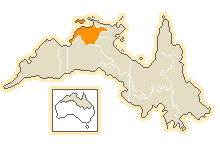
In the dry season (April/May to September), dry southerly and easterly trade winds dominate. Humidity is relatively low and rain is very unusual. At Jabiru the average maximum temperature for June-July is 32°C.
During the 'build up' (October to December) there are high temperatures and high humidity. However 'build up' storms are impressive and lightning strikes are frequent. At Jabiru the average maximum temperature for October is 37.5°C. As can be seen on the graph below the amount of rain increases hence the name.
The wet season (January to March/April) is characterised by warm temperatures and, obviously, rain. Most of the rain is associated with monsoonal troughs formed over
Annual rainfall in
The following charts provide an indication of rainfall, temperatures and humidity within the Kakadu region. The data for the charts was sourced from the Bureau of Meteorology, Darwin.
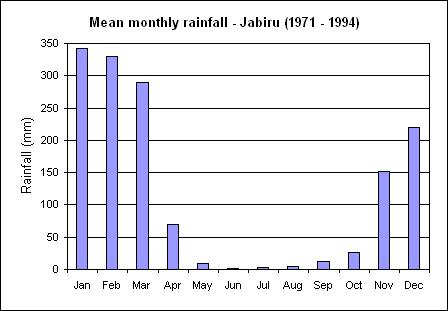
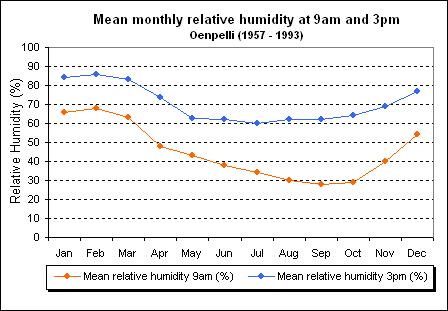
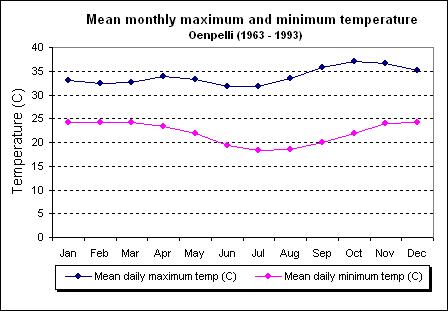
The Darwin-Kakadu region is a major centre of biodiversity due largely to its relatively high rainfall and environmental variability. More than 1700 plant species are recorded. The "stone country" (the sandstone plateau and escarpment) of western Arnhem Land, and parts of Kakadu, is probably the most important refuge area for life in northern Australia, sheltering many plant and animal species which occur nowhere else on earth.
Its complex topography, with deep, extensive gorges and large areas of sandstone platforms and rock piles, provides an array of microclimates, and this has allowed many species to survive here through times when the regional climate has been harsh. The rugged gorges and sheer escarpments have also provided some protection from fire, providing some safety for fire-sensitive plants and animals. The main areas are stone country and outliers, southern hills and basins, lowlands, floodplains and lastly estuaries and tidal flats
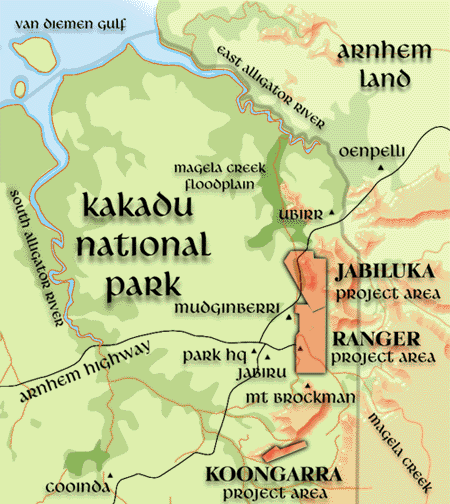
More than 1700 plant species are recorded in Kakadu. However it is considered to be one of the most weed free national parks in the world: only 5.7 per cent of recorded species are weeds. There are 97 identified rare, vulnerable or poorly known plant species that occur in Kakadu.